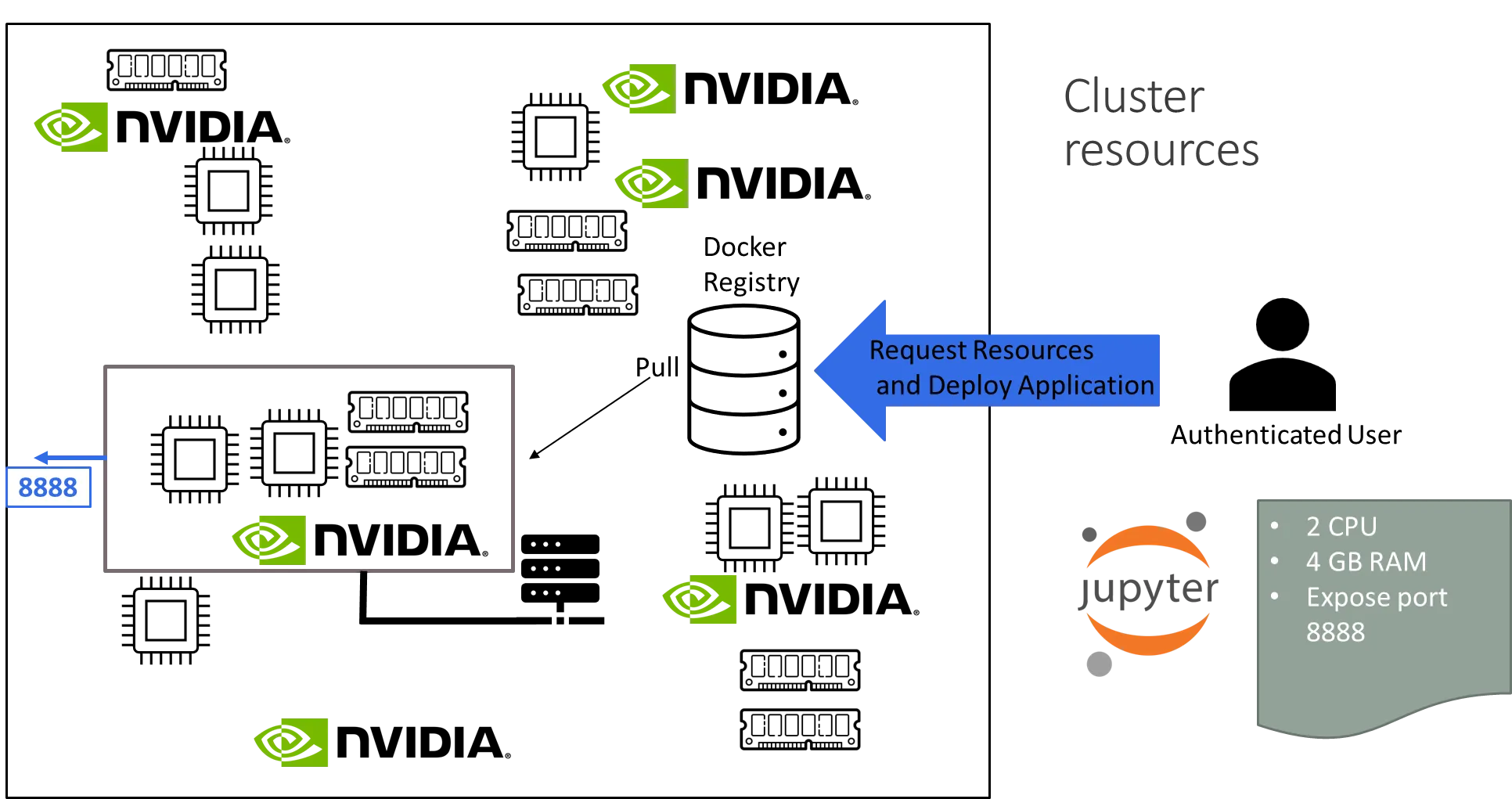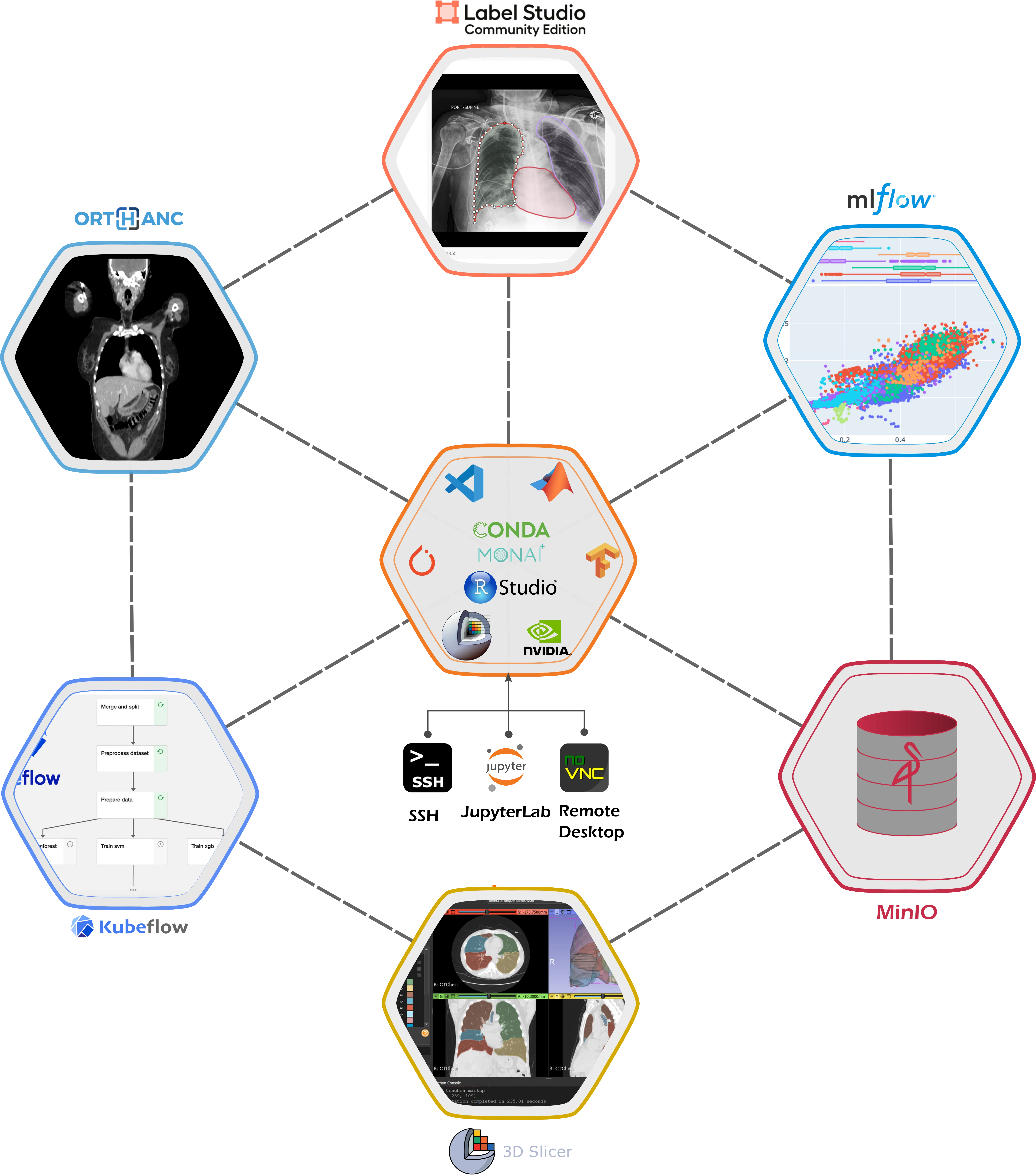
MAIA: A New Approach for Research and Collaboration in Medical AI
Rethinking the Way We Do Medical AI Research
My journey as a PhD student began in October 2020 at the Biomedical Imaging group at KTH. But my involvement with the group dates back to January 2018, when I joined as a Master’s student working on my thesis. I later stayed on as a software developer, contributing to the design and development of medical imaging visualization tools and AI-powered software for both private companies and research teams at Karolinska University Hospital.
During my PhD, I focused on the development and application of AI methods for medical imaging analysis in oncology. Like many in the field, I started with deep learning approaches for image segmentation, adapting state-of-the-art models to the specific challenges of medical imaging. But early on, I realized that this path wasn’t fulfilling for me.
It wasn’t just that the field was already crowded with brilliant researchers doing groundbreaking work. I found myself more interested in applying existing AI tools to solve real-world clinical problems, rather than pushing the boundaries of model architectures. I also became aware of a frustrating pattern: many research projects ended with a paper—and very rarely with real clinical impact. I wanted to do work that would go beyond publications, make a difference in patients’ lives, and leave a lasting footprint in clinical practice.
The Hidden Bottlenecks: Infrastructure and Collaboration
As I dug deeper, I noticed some critical limitations in our research infrastructure. Each researcher had their own local workstation, with no access to high-performance computing resources and minimal ability to collaborate. Remote access was cumbersome and insecure, storage was limited, and running large-scale experiments was nearly impossible. Even basic tasks like replicating a colleague’s work or sharing data were a challenge.
On top of that, researchers were responsible for maintaining their own systems—an inefficient use of time and energy. And from a sustainability point of view, this model was deeply flawed: each new PhD student received a new machine, which often sat idle or became obsolete in a few years.
Even more concerning were the missed opportunities for collaboration with clinicians. There was no shared environment, no common language, and often no ongoing communication. Many promising projects would start with enthusiasm but quickly fizzle out. Clinicians would deliver data via USB drives or hard disks, and researchers would work in isolation. Months later, results were sent back with a paper draft—and the project would quietly end. The tools rarely made it into clinical use.
Building MAIA: A Vision for Better Research
I knew there had to be a better way
I started imagining a new approach—one that could overcome these limitations, bring people together, and actually support translational research. Despite the many issues to address, I saw an opportunity to build something meaningful: a platform that could elevate the quality of our research, foster stronger collaboration with clinicians, and provide a robust, scalable infrastructure.
In the spring of 2021, I began working—initially in my spare time—on what would eventually become MAIA: the Medical AI Assistant. MAIA is a research platform designed to streamline workflows, encourage collaboration between researchers and clinicians, and support the development of AI tools that could actually be deployed in clinical practice.

Figure 1: The original design concept for the MAIA platform, showcasing its core components and workflow integration. Originally, MAIA was designed as a simple Kubernetes CLuster with namespaced projects where the users could deploy their custom Docker Images: easy to mantain, but not so easy to use.
From Idea to Platform
Throughout 2021 and 2022, I focused on building the technical foundation—learning the ins and outs of Kubernetes, Docker, and scalable system design. By the end of 2022, I had a functional prototype and presented it to my research group. The response was overwhelmingly positive, and I was encouraged to integrate the platform into our broader research efforts. From that point on, MAIA officially became part of my PhD project, with full support from my division.
 Figure 2: The initial MAIA cluster setup, utilizing the existing servers available within our research group.
Figure 2: The initial MAIA cluster setup, utilizing the existing servers available within our research group.
Scaling Collaboration: From Researchers to Clinicians
After the initial development phase, I turned my attention to the heart of MAIA’s mission: enabling real collaboration between researchers and clinicians. This meant not only fine-tuning the platform’s capabilities for model development and computing power, but also designing workflows that fit both sides of the equation.
In summer 2023, I started working with the Radiology group at Karolinska University Hospital to deploy MAIA in a clinical setting. The collaboration has been incredibly productive, helping shape MAIA into a platform that meets the needs of AI engineers, researchers, and clinicians alike.
Together, we developed features such as an intuitive user interface for clinicians to explore and interact with AI models, and tools for integrating those models into real clinical workflows. This has been a major step forward in bridging the gap between research and practice—and it’s just the beginning.
 Figure 3: The updated MAIA Workspace concept, introduced in subsequent MAIA upgrades. The workspace is designed to encapsulate all technical and clinical applications at the project level, enabling efficient AI solution development, evaluation, and deployment to support clinical workflows.
Figure 3: The updated MAIA Workspace concept, introduced in subsequent MAIA upgrades. The workspace is designed to encapsulate all technical and clinical applications at the project level, enabling efficient AI solution development, evaluation, and deployment to support clinical workflows.
What’s Next for MAIA
Looking ahead, I’m working on a detailed paper that outlines the architecture, features, and real-world use cases of MAIA. I hope it will serve as a guide for others looking to adopt similar strategies—and inspire new collaborations across the research and clinical spectrum.
I’m also actively seeking new partners—research groups, hospitals, and institutions—who want to collaborate on expanding MAIA’s capabilities or exploring new use cases in medical imaging AI. I believe that through open collaboration, we can create a stronger, more effective ecosystem that ultimately leads to better patient care.
Final Thoughts
MAIA started as a side project born out of frustration—but it has grown into a powerful platform with the potential to reshape how we do research in medical imaging AI. By creating a common environment that supports both technical excellence and collaborative spirit, I believe we can accelerate innovation, improve outcomes, and bring AI closer to the clinical frontlines.
I’m excited for what lies ahead and committed to making MAIA an open, accessible tool for researchers and clinicians around the world. Together, we can build something that truly makes a difference.


